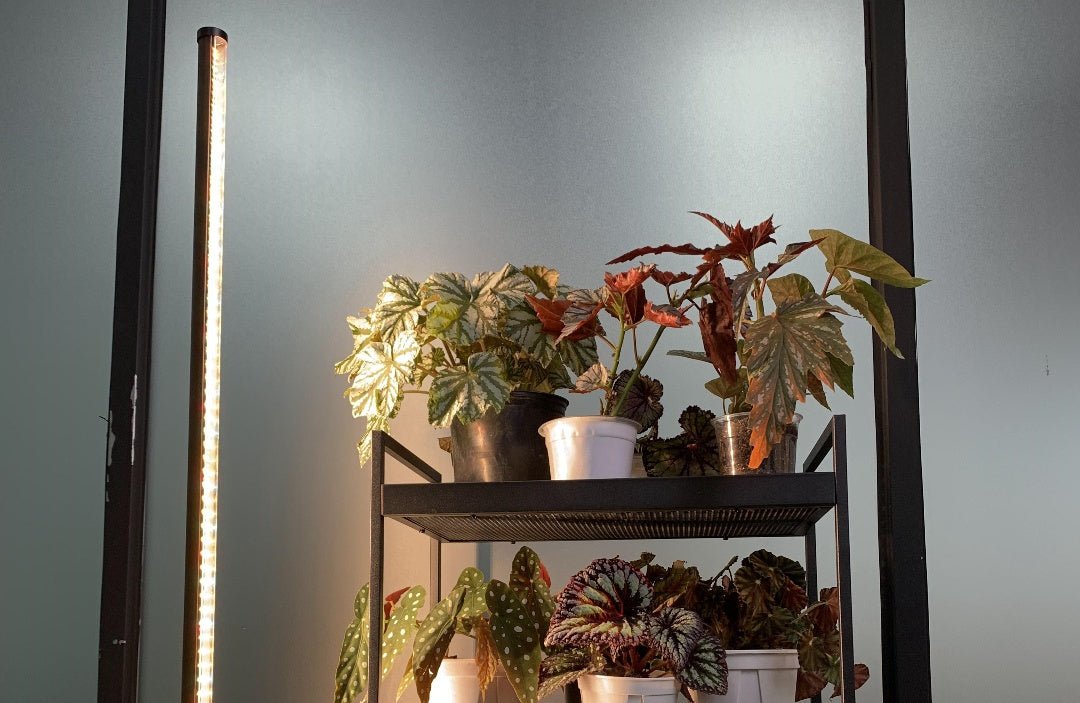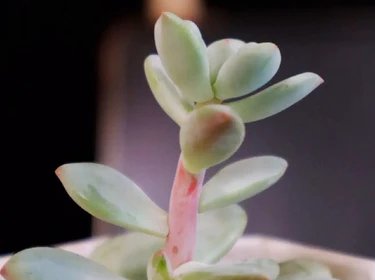1.Results and analysis
1.1 Impact of different LED light sources on the yield of red leaf lettuce
To study the impact of different LED light sources on the yield of red leaf lettuce, we measured the fresh weight and dry weight of red leaf lettuce grown under different LED light sources. The results showed that the fresh weight of aboveground parts of red leaf lettuce under different LED light sources was 56.82-83.8g, the dry weight of aboveground parts was 1.51-2.19g, and the moisture content was 95.99%-97.64%. The fresh weight and dry weight of aboveground parts under warm yellow light(spectrum w03) and pinkish purple light bias red(spectrum p02) were significantly higher than under white bias powder(spectrum p01) and 5000k(spectrum w01) light source. There was no significant difference in moisture content between different treatments (Figure 1; Figure 2; Figure 3).

Figure 1. Effects of different light treatments on the fresh weight of hydroponic red leaf lettuce
Note: Different uppercase letters above the bars represent significant differences between treatments (p-value <0.05); different bar colors correspond to different spectral colors.

Figure 2. Effects of different light treatments on the dry weight of hydroponic red leaf lettuce
Note: Different uppercase letters above the bars represent significant differences between treatments (p-value <0.05); different bar colors correspond to different spectral colors.

Figure 3. Effects of different light treatments on the moisture content of hydroponic red leaf lettuce
Note: Different uppercase letters above the bars represent significant differences between treatments (p-value <0.05); different bar colors correspond to different spectral colors.
1.2 Impact of different LED light sources on the growth morphology of red leaf lettuce
To study the impact of different LED light sources on the growth morphology of red leaf lettuce, we measured the plant height and plant span of red leaf lettuce grown under different LED light sources. The results showed that the plant height of red leaf lettuce under different LED light sources was 56.8-83.8cm, the plant span was 14.3-21.5cm, and there were significant differences between different LED light source treatments. The plant height under warm yellow light(spectrum w03) and pinkish purple light bias red(spectrum p02) was significantly higher than under white bias powder(spectrum p01) and 5000k(spectrum w01) light sources. The plant span under white bias powder(spectrum p01) was significantly lower than other LED light sources (Figure 4).

Figure 4. Effects of different light treatments on morphological growth of hydroponic red leaf lettuce
Note: Different uppercase letters above the bars represent significant differences between treatments (p-value <0.05); different bar colors correspond to different spectral colors.
1.3 Impact of different LED light sources on root system growth of red leaf lettuce
To study the impact of different LED light sources on the root system growth of red leaf lettuce, we measured root tip number, total root length, average root diameter, total root projection area, total root volume, etc. of red leaf lettuce under different LED light sources. The results showed that the total root length of red leaf lettuce under different LED light sources was 1514.40-2713.75cm, the root projection area was 106.69-187.48cm2, the root surface area was 335.19-589cm2, the average root diameter was 0.61-0.74mm, the total root volume was 5.40-10.28cm3, the root tip number was 3002-4460, the branch number was 3259-8122, and the intersection number was 1192-3957. There was no significant difference in various root system indicators between different LED light source treatments (Table 1).

1.4 Impact of different light treatments on quality of hydroponic red leaf lettuce
To study the impact of different LED light sources on the quality of lettuce, we measured the soluble sugar content, soluble protein content, nitrate nitrogen content, and vitamin C content of red leaf lettuce under different LED light sources. The results showed that the soluble sugar content was 288.41-493.538 pg, the soluble protein content was 3.23-548.82μg/g, the nitrate nitrogen content was 1856.01-3568.98μg, and the vitamin C content was 450μg. There were significant differences between different LED light source treatments. The soluble sugar content under 5000k(spectrum w01) and pinkish purple light bias red(spectrum p02) was significantly higher than under white bias powder(spectrum p01) and warm yellow light(spectrum w03) sources. The soluble protein content under white bias powder(spectrum p01) and warm yellow light(spectrum w03) was significantly higher than under other LED light sources. The nitrate nitrogen content under pinkish purple bias red light was significantly lower than under other LED light sources. There was no significant difference in vitamin C content (Figure 5; Figure 6; Figure 7; Figure 8).

Figure 5. Effects of different light treatments on the soluble sugar content of red leaf lettuce
Note: Different uppercase letters above the bars represent significant differences between treatments (p-value <0.05); different bar colors correspond to different spectral colors.

Figure 6. Effects of different light treatments on the nitrate nitrogen content of red leaf lettuce
Note: Different uppercase letters above the bars represent significant differences between treatments (p-value <0.05); different bar colors correspond to different spectral colors.

Figure 7. Effects of different light treatments on the soluble protein content of red leaf lettuce
Note: Different uppercase letters above the bars represent significant differences between treatments (p-value <0.05); different bar colors correspond to different spectral colors.

Figure 8. Effects of different light treatments on the vitamin C content of red leaf lettuce
Note: Different uppercase letters above the bars represent significant differences between treatments (p-value <0.05); different bar colors correspond to different spectral colors.
2.Discussion and conclusions
The quality of light not only affects the morphological construction of plants, but also affects its quality and growth morphology. Blue light has the functions of dwarfing plants, improving quality, and controlling plant expansion. Red light can promote branch formation of plants, increase dry matter, and accumulate pigments. This study investigated the impact of different light sources on the yield, growth morphology, root system growth and quality of hydroponic red leaf lettuce.
The results showed that warm yellow light(spectrum w03) and pinkish purple bias red light were the light source conditions most conducive to increasing the yield and promoting the growth morphology of red leaf lettuce. Comprehensively considering the impact of the four light sources on the yield, growth and quality of red leaf lettuce, pinkish purple bias red was the most suitable LED light source for hydroponic cultivation of red leaf lettuce. Appropriate red/blue light ratio can promote the growth and yield of red leaf lettuce, but excessive red light did not further promote growth and yield. Green light had no significant effect on the growth and yield of red leaf lettuce, but may affect nitrate accumulation in lettuce.
In summary, warm yellow light(spectrum w03) and pinkish purple bias red light were the light sources most conducive to increasing red leaf lettuce yield and promoting growth morphology. Considering the effects of the four light sources on red leaf lettuce yield, growth and quality comprehensively, pinkish purple bias red was the most suitable LED light source for hydroponic cultivation of red leaf lettuce. Appropriate red/blue light ratio can promote the growth and yield of red leaf lettuce, but excessive red light did not further promote growth and yield. Green light had no significant effect on the growth and yield of red leaf lettuce, but may affect nitrate accumulation in lettuce.




